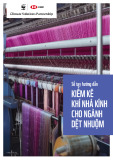Các yếu tố ảnh hưởng đến tính chất cơ lý của vật liệu polymer
Yếu tố cấu trúc
1. Phân tử lượng 2. Độ khâu mạch và phân nhánh 3. Độ kết tinh và hình dạng tinh thể 4. Loại copolymer (ngẫu nhiên, khối ghép) 5. Dẻo hóa 6. Định hướng phân tử 7. Chất độn
Yếu tố ngoại vi
1. Nhiệt độ 2. Thời gian, tần số, tốc độ tạo ứng suất 3. Áp suất 4. Ứng suất và biên độ biến dạng 5. Loại biến dạng (trượt, kéo, hai chiều…) 6. Xử lý nhiệt và lai lịch nhiệt 7. Bản chất môi trường xung quanh
Các loại lực thường tác dụng lên vật liệu ở trạng thái rắn
Khi tác dụng lực vào vật liệu rắn, vật liệu sẽ biến dạng tùy thuộc vào lực tác dụng:
Lực kéo hoặc lực căng (tensile force)
Lực nén hoặc ép ở hai đầu mẫu vật liệu (dang hình trụ) (compressive force)
Lực nén hoặc đẩy phía bên hông của mẫu dài (lực uốn – bending, flexural force)
Lực quay hoặc xoắn (torsion force) hoặc kết hợp lực đẩy và trượt (shear force)
ASTM D695 Blocks, rods or tubes
ASTM D747 Rectangular samples
Tensile stress: ASTM D638, D882, D1708 Universal applications
ASTM D1876 Adhesive layers, tape
ASTM D1043 Films and sheets
Impact test: ASTM D4812, D256 Thick rectangular samples
Drop dart: ASTM 3092 Thin films
Engineering Stress
F
F t
F t
Area, A
Area, A
F s
F s
F t
F t
F
t =
=
=
• Tensile stress, : • Shear stress, t:
F A o
or
f 2
N 2m
lb in
Ft A o original area before loading
13
Stress has units: N/m2 or MPa
Engineering Strain
• Lateral strain:
• Tensile strain:
L o
-d L L w o
d L o
wo
d /2
L /2
d
• Shear strain:
q Dx
g = Dx/y = tan
q
90º - q
90º
Adapted from Fig. 6.1 (a) and (c), Callister 7e.
14
y Strain is always dimensionless
Stress-Strain Testing
DIN 53455, ASTM D 638 thí nghiệm với các loại nhựa. Thí nghiệm kéo DIN 53504, ASTM D 882 thí nghiệm kéo với nhựa đàn hồi. Thí nghiệm kéo DIN 53571, ASTM D 651 thí nghiệm cho nhựa xốp đàn hồi-mềm. Thí nghiệm kéo
Elastic Deformation
bonds stretch
return to initial
d
F
F
Linear- elastic
1. Initial 2. Small load 3. Unload
Non-Linear- elastic
d
16
Elastic means reversible!
Plastic Deformation
1. Initial 2. Small load 3. Unload
bonds
p lanes stretch
still & planes
sheared shear
F
F
d plastic d elastic + plastic
Plastic means permanent!
d
dplastic
17
linear elastic linear elastic
Biểu đồ hiệu ứng kéo
Đường cong ứng suất - biến dạng của nhựa vô định hình
Đường cong ứng suất -biến dạng của nhựa bán kết tinh
Biểu đồ hiệu ứng dãn của Polyamid 66 sẽ thay đổi theo diều kiện nhiệt dộ và thời gian thí nghiệm khác nhau
30%wt sợi thủy tinh
10%wt sợi thủy tinh
Không có sợi thủy tinh
Hiện tượng hồi phục của Polymer
Linear Elastic Properties
Young’s Modulus: tỷ lệ giữa ứng suất và biến dạng.
Với các vật liệu đẳng hướng, modul Young tỷ lệ với độ dốc ban đầu của đường cong ứng suất-biến dạng.
Với ∆L = L – L0
Ví dụ cách tính Module Young
Polymers
Composites / fibers
Young’s Modulus, E Comparison
Metals Alloys
Graphite Ceramics Semicond
Diamond
1200 10 00 8 00 6 00
Carbon
fibers only
4 00
Tungsten Molybdenum
Si carbide Al oxide Si nitride
C FRE(|| fibers)*
2 00
A ramid fibers only
<111> Si crystal <100>
Glass
- soda
E(GPa)
Steel, Ni Tantalum Platinum Cu alloys Zinc, Ti Silver, Gold Aluminum
A FRE(|| fibers)* Glass fibers only
10 0 8 0 6 0
G FRE(|| fibers)*
Magnesium, Tin
4 0
Concrete
GFRE*
2 0
*
CFRE G FRE( fibers)*
G raphite
10 8 6
C FRE( fibers) AFRE( fibers)
* *
Polyester
4
PET PS
Epoxy only
PC
2
PP HDP
E
106 Pa
Composite data based on reinforced epoxy with 60 vol% of aligned carbon (CFRE), aramid (AFRE), or glass (GFRE) fibers.
Wood( grain)
1 0.8 0.6
PTF
E
0.4
LDPE
0.2
– > 0.50 density increases
– < 0.50 density decreases
35
(voids form)
Units: E: [GPa] or [psi] : dimensionless
Plastic (Permanent) Deformation
(at lower temperatures, i.e. T < Tmelt/3)
Elastic + Plastic at larger stress
engineering stress,
Elastic initially
permanent (plastic) after load is removed
engineering strain,
p
plastic strain
Adapted from Fig. 6.10 (a), Callister 7e.
36
• Simple tension test:
Elastic Strain Recovery
Adapted from Fig. 6.17, Callister 7e.
37
Yield Strength, y
• Stress at which noticeable plastic deformation has occurred
tensile stress,
y = yield strength
y
when p = 0.002
Note: for 2 inch sample
= 0.002 = Dz/z
engineering strain,
Dz = 0.004 in
Adapted from Fig. 6.10 (a), Callister 7e.
38
p = 0.0025
Yield Strength : Comparison
Polymers
Metals/ Alloys
Composites/ fibers
Graphite/ Ceramics/ Semicond
20 00
(4140) qt
Steel
10 00
.
.
l
) a P M
l
(
700 600 500 400
Ti (5Al-2.5Sn) a W (pure) Cu (71500) cw Mo (pure) (4140) a Steel (1020) cd Steel
,
300
y
(1020) hr
200
,
Al (6061) ag Steel Ti (pure) a Ta (pure) Cu (71500) hr
d e i y e r o f e b s r u c c o y l l
d e i y e r o f e b s r u c c o y l l
100
dry
, e r u s a e m o t d r a H
e ¨ r u s a e m o t d r a H
PC
Nylon 6,6
Al (6061) a
a u s u e r u t c a r f ,
a u s u e r u t c a r f ,
humid
PET PVC
70 60 50 40
l
Based on data in Table B4, Callister 7e. a = annealed hr = hot rolled ag = aged cd = cold drawn cw = cold worked qt = quenched & tempered
n o i s n e t n
30
PP H DPE
n o i s n e t n
i
i
i
h t g n e r t s d e Y
e c n i s , s e t i s o p m o c x i r t a m y x o p e d n a x i r t a m c i m a r e c n
i
20
e c n i s
LDPE
39
Tin (pure)
10
Room T values
Tensile Strength, TS
TS
Adapted from Fig. 6.11, Callister 7e.
• Maximum stress on engineering stress-strain curve.
F = fracture or ultimate strength
y
s s e r t s
g n i r e e n i g n E
Typical response of a polymer
Typical response of a hard material strain engineering strain
Neck – acts as stress concentrator
• Metals: occurs when noticeable necking starts.
40
• Polymers: occurs when polymer backbone chains are aligned and about to break.
Tensile Strength : Comparison
Polymers
Metals/ Alloys
Composites/ fibers
Graphite/ Ceramics/ Semicond
5000
C fibers Aramid fib E-glass fib
3000 2000
(4140) qt
Steel
Diamond
1000
) a P M
A FRE (|| fiber) GFRE (|| fiber) C FRE (|| fiber)
(
Si nitride
Al oxide
300 200
W (pure) Ti (5Al-2.5Sn) a (4140) a Steel Cu (71500) cw Cu (71500) hr Steel (1020) Al (6061) ag Ti (pure) a Ta (pure) Al (6061) a
S T ,
wood(|| fiber)
100
Si crystal <100> Glass-soda Concrete
Nylon 6,6 PET PC PVC PP
40 30
GFRE ( fiber) C FRE ( fiber) A FRE( fiber)
H DPE
Graphite
20
L DPE
h t g n e r t s
10
e
wood ( fiber)
l i s n e T
Room Temp. values
Based on data in Table B4, Callister 7e. a = annealed hr = hot rolled ag = aged cd = cold drawn cw = cold worked qt = quenched & tempered AFRE, GFRE, & CFRE = aramid, glass, & carbon fiber-reinforced epoxy composites, with 60 vol% fibers.
41
1
Design or Safety Factors
Often N is between 1.2 and 4
working
y N
• Design uncertainties mean we do not push the limit. • Factor of safety, N
• Example: Calculate a diameter, d, to ensure that yield does not occur in the 1045 carbon steel rod below. Use a factor of safety of 5.
1045 plain
working
carbon steel:
y N
d
L o
y = 310 MPa TS = 565 MPa
, N 220 000 4 2 /d
F = 220,000N
5
42
d = 0.067 m = 6.7 cm
Ductility
o
f
- L L x 100 EL%
• Plastic tensile strain at failure:
o
smaller %EL
L
E ngineering tensile stress,
larger %EL
Adapted from Fig. 6.13, Callister 7e.
Ao Lo Af Lf
Engineering tensile strain,
A
A
f
=
RA%
x
100
o - A
o
43
• Another ductility measure:
Toughness • Energy to break a unit volume of material • Approximate by the area under the stress-strain curve.
small toughness (ceramics)
E ngineering tensile stress,
Adapted from Fig. 6.13, Callister 7e.
large toughness (metals)
Engineering tensile strain,
Brittle fracture: elastic energy Ductile fracture: elastic + plastic energy
44
very small toughness (unreinforced polymers)
Resilience, Ur
• Ability of a material to store energy
– Energy stored best in elastic region
y d
Ur
0
U
r
y
y
1 @ 2
Adapted from Fig. 6.15, Callister 7e.
45
If we assume a linear stress-strain curve this simplifies to
Thí dụ phép tính độ bền kéo vật liệu
N/mm2
Một vật liệu polymer hình trụ có đường kính 2.5 mm. Vật liệu sẽ chịu một lực kéo lớn nhất là bao nhiêu với độ an toàn là S = 2.5? Xác định giá trị độ bền kéo của vật liệu?
%
Một vài hiện tượng trong thí nghiệm nén và kéo
Hiện tuợng gãy (đứt )
Biểu hiện gãy đứt của chất dẻo cứng dòn, sơ dồ hiệu ứng dãn
Một vài hiện tượng trong thí nghiệm nén và kéo
Hiện tuợng biến dạng đứt (kéo chỉ)
Biểu hiện đứt của nhựa dai, sơ đồ hiệu thế dãn
Một vài hiện tượng trong thí nghiệm nén và kéo
Đồ thị hiệu ứng dãn so sánh các đặc tính kéo của nhựa
Tính chất kéo của polymer cứng
Tính chất kéo của polymer mềm dẻo
Biểu dồ hiệu ứng-dãn của LDPE
Mullins’ effect
Stress-strain responses of a 50 phr carbon-black filled SBR submitted to a simple uniaxial tension and to a cyclic uniaxial tension with increasing maximum stretch every 5 cycles
• Most of the softening, which is characterized by a lower resulting stress for the same applied strain, appears after the first load.
• After a few number of cycles (values up to 10 are reported in the literature depending on the material nature), the material responses coincide during the successive cycles.
• The softening appears for stretches lower or equal to the maximum stretch ever applied.
• When the extension exceeds the maximum extension previously applied, the material stress-strain response returns on the same path than the monotonous uniaxial tension test stress-strain response after a transition, which increases with the amount of strain.
• The softening increases progressively with the increasing maximum stretch.
Zwick/Roell Tensile Testing Machine
• Flexural stress • Flexural stress at break • Flexural strain • Stress at given strain • Flexural modulus
is the distance between the two outer
L: supports d: is the deflection due to the load F applied at the middle of the beam w and h are the width and height of the specimen
Flexural fatigue strength of some thermoplastics a: acetal polymer, b: PP, c: PE-HD, d: PVC-U
Summary
• Stress and strain: These are size-independent
measures of load and displacement, respectively.
• Elastic behavior: This reversible behavior often
shows a linear relation between stress and strain. To minimize deformation, select a material with a large elastic modulus (E or G).
• Plastic behavior: This permanent deformation
behavior occurs when the tensile (or compressive) uniaxial stress reaches y.
• Toughness: The energy needed to break a unit
volume of material.
• Ductility: The plastic strain at failure.
69
Độ bền va đập (Impact testing)
The impact resistance, the ability of the material to resist breaking under an impulsive load, or the ability to resist the fracture under stress applied at high velocity.
The impact properties of polymers are directly related to the overall toughness of the material which directly proportional to the area under the stress-strain curve impact energy is a measure of the toughness of the material. The higher the impact energy, the higher the toughness.
The molecular flexibility plays an important role in determining the toughness and the brittleness of a material Why?
Impact properties of a polymer can be improved by adding a structure modifier, such as rubber or plasticizer, by changing the orientation of the molecules or by using fibrous fillers.
Kiểm tra bằng phương pháp va đập quả lắc (Pendulum Impact Test)
The most common configuration for pendulum impact test: Izod and Charpy test.
The result is expressed in term of kinetic energy consumed by the pendulum in order to break the specimen
The energy required to break a standard specimen is actually the sum of different contributes: the energy to deform the specimen, to initiate the fracture, to propagate the fracture across specimen and the energy spent in order to toss the broken ends of the specimen.
(Pendulum Impact Test)
For the test, pendulum hammers in according to standard ISO 13802 are used with a nominal impact energy range from 0.5 un to 50J and impact velocities of 2.9 m/s and 3.8 m/s in Charpy configuration, and 3.5 m/s in Izod one.
When a test is performed, the energy W absorbed by the specimen (the energy looses by the pendulum during the impact) is calculated from the difference between the pendulum hammer height over specimen before and after impact and the mass m of the pendulum hammer itself.
The absorbed energy is from that calculated:
Tạo vết khắc mẫu The notch
The reason for notching the specimen is to provide a stress concentration area that promotes a brittle rather than a ductile failure.
A plastic deformation is also prevented by such type of notch in the specimen.
The impact values are seriously affected because of the notch sensitivity of certain type of plastic material.
In the notched impact test, a notch is cut into the specimen. By notching, a stress concentration as well an increase in crack propagation rate is achieved at the front of the crack tip it is possible to break tough materials too, also if they do not break when unnotched specimens are tested.
Tiêu chuẩn mẫu đo
Izod test procedures
Izod impact test can be performed on both notched or unnotched specimens by the support and the test method is rather different ISO 180 and ASTM D256.
Only the specimens that are completely broken can be accepted as a results.
Tough notched plastic materials (which Izod impact strength is higher than 27 J/m) seem to spend very low energy in tossing the broken end of the specimen. For relative brittle material (which Izod impact strength is less than 27 J/m), the energy loss due to toss factor represents a major portion of the total energy.
Charpy test procedures
Charpy edgewise impact specimen with single notch, as usually used.
Charpy flat wise impact specimen unnotched, as common used for this test method
The specimen is placed horizontally and supported unclamped at both ends. Only the specimens that are completely broken can be accepted as a results.
The Charpy impact test is performed on both notched or unnotched specimens by means of three points support and is used to evaluate the toughness behavior under impact load ISO 179 and ASTM D6110.
The Charpy test standard distinguish between a configuration in which the direction of impact is parallel to dimension b with impact on the narrow longitudinal surface h*l of the specimen (edgewise) and one in which the direction of impact is parallel to dimension h with impact on the broad longitudinal surface b*l (flat wise)
Impact strength of an unnotched specimen
To determine Charpy (or Izod) impact strength of an unnotched specimen AcU, also known as Resilience of the material, the energy Wc used in order to break the specimen is related to the initial cross-section area of the specimen, by the following formula:
b
h
Impact strength of an notched specimen
Notched Charpy resilience AcN , is calculated from the energy absorbed during the impact W related to the smallest initial cross-section area of the specimen at notch base:
h
b
Charpy impact strength, both notch and unnotch, of a selected number of polymers
CRYOBOX
IMPACTOR II
The force-time curve acquired during a test
The velocity-time curve obtained by calculation
The force-deformation curve obtained from the test data
The energy-deformation curve
FACTORS AFFECTING THE MEASURE
Temperature
Orientation
Degree of crystallinity
Processing conditions and specimen preparation
Rate and method of loading
Fillers and additives
Hardness
Phương Pháp Đo Độ Cứng BRINELL Johan August Brinell (1900)
Trị số độ cứng gọi là HB đươc xác định bằng áp lực trung bình, biểu thị bằng Newton trên 1 mm2 diện tích mặt cầu do vết lõm để lại, độ cứng được tính theo công thức:
DIN 51351 or DIN 53456 standard: D= 5mm; P=0.5-10N
trọng P cho trước,
Độ cứng Brinell được xác định bằng cách nhấn một khối cầu bằng thép cứng hoặc cacbit có đường kính D xác định dưới một trong tải khoảng thời gian nhất định, bi thép sẽ lún sâu vào mẫu thử.
Mũi thử trong phương pháp đo này là bi thép có đường kính 10mm với lực ấn lõm vào bề mặt vật liệu. Đối với các vật liệu mềm, lực ấn sẽ được giảm liệu cực xuống, và đối với các vật cứng (kim loại), sẽ sử dụng đến bi thử Cardbide Tungsten để giám thiếu biến dạng đầu thử.
Phương Pháp Đo Độ Cứng ROCKWELL H.M. Rockwell và S.P. Rockwell (1914)
Mũi nhọn kim cương có góc ở đỉnh là 120 độ v2 bk cong là R= 0.2mm
Viên bi thép tôi cứng có đường kính 1/16,1/8,1/4,1/2 inchs
Độ cứng được xác định bằng cách lần lượt tác dụng lên viên bi hoặc mũi kim cương hai lực ấn nối tiếp là 100N, tiếp theo là 600N hoặc 1000N hoặc 1500N theo tiêu chuẩn DIN 50103
k là hằng số (dùng bi k = 130,dùng mũi kim cương thì k = 100) e: là giá trị một độ chia (e~0.001mm) h: là hiệu độ sâu hai lần ấn (mm)
Độ cứng Rockwell được biểu diễn bởi một đại lượng qui ước phụ thuộc vào chiều sâu h của vết lõm và xác định theo công thức: HR = k- h/e
Độ cứng Rockell được xác định theo một đại lượng quy ước, không có thứ nguyên, phụ thuộc vào chiều sâu vết lõm. Chiều sâu càng lớn thì độ cứng càng nhỏ và ngược lại.
Máy đo độ cứng ROCKWELL: ATK-600
Đầu mũi thử SHORE A và SHORE D
Principle of Loading method
* Weights (applied force)
Step load not continuous
* Load applied quickly
• Weights (applied force) • Increase from 0 to setting value with constant speed. • Exchangeable
Setting value Setting value
Holding time Holding time
0
0
Contact point Contact point
Time
Time Loading method of Rockwell
Loading method of Britnell
Duới dây là bảng trị số dộ cứng của các loại nhựa và kim loại do duợc với thí nghệm Brinell
Hardening
• An increase in y due to plastic deformation.
large hardening
1
y y
small hardening
91
0
Force, load; Displacement/ elongation; Stress; Strain (Gauge Length); How to calculate stress, strain, elongation; Units of measurement; Stress vs Strain Curve; Force vs Displacement Curve; Modulus of Elasticity or Young’s Modulus; Yield Point, Upper & Lower Yield Point, Yield Strength; Maximum Force, Stress; Break Point; Elongation At Break Point
• Typical tensile
Adapted from Fig. 6.2, Callister 7e.
specimen
gauge length
Load Cell and extensometer
Strain gauges
Case study
Nanocomposite: Khái quát chung
Là hệ dị thể mà trong đó pha phân tán (mang tính chất khác với pha nền) có ít nhất
một chiều là ở kích thước nanometres
• Pha nền : Kim loai, céramique, polymer,…
• Pha phân tán : gồm có 3 dạng
3 chiều đều ở kích thước nano : gồm những hạt ở kích thước nano - kim loại : Au, Pt, Ag, … - vô cơ : CdS, SiO2, ferrites,… - hữu cơ : carbone noir,…
2 chiều ở kích thước nano: gồm những dạng ống dài có đường kính ở kích thước nano
- vô cơ : palygorskite, sepiolite,… - hữu cơ : carbon nanotubes, cellulose hoặc chitin nanowhiskers
1 chiều kích thước mano : gồm những phiến lớp mỏng ở kích thước nano
- hữu cơ: graphite dạng phân tán, acid dạng tinh thể poly(muconique)
cristaux ,…
- vô cơ: những lớp hydoxid dạng lớp đôi, silicate dạng lớp hay đất
sét…
What are the types of structures formed from composites?
Examples
Geometry of reinforcement
Schematic representations
Types of composite
Particle- reinforced
Concrete, car tires
Small, dispersed and equiaxed particles
Fiber- reinforced
Large length to diameter ratio fiber
Wood, bicycle frame
Laminates
Plywood, modern ski
Large length to diameter ratio fiber in each laminate

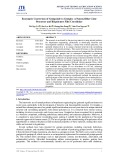
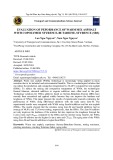
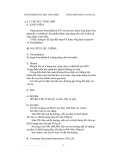

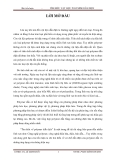
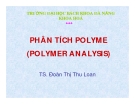






![Bài giảng Chế biến khoáng sản vô cơ [Mới nhất]](https://cdn.tailieu.vn/images/document/thumbnail/2025/20251025/thanhvan173002/135x160/21521761538638.jpg)





